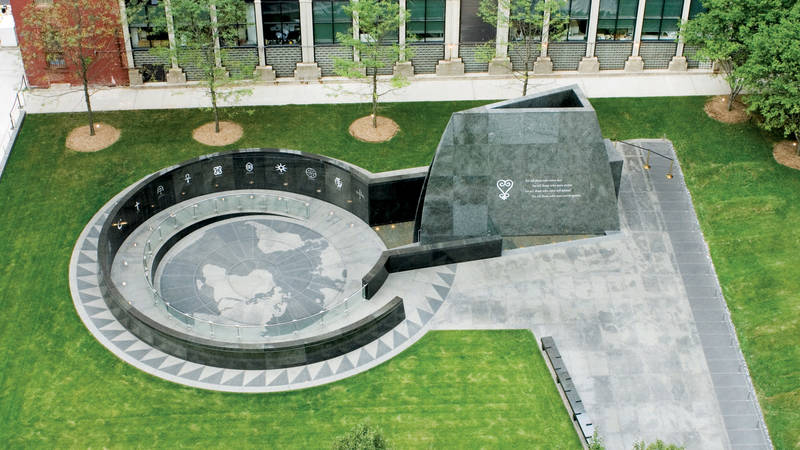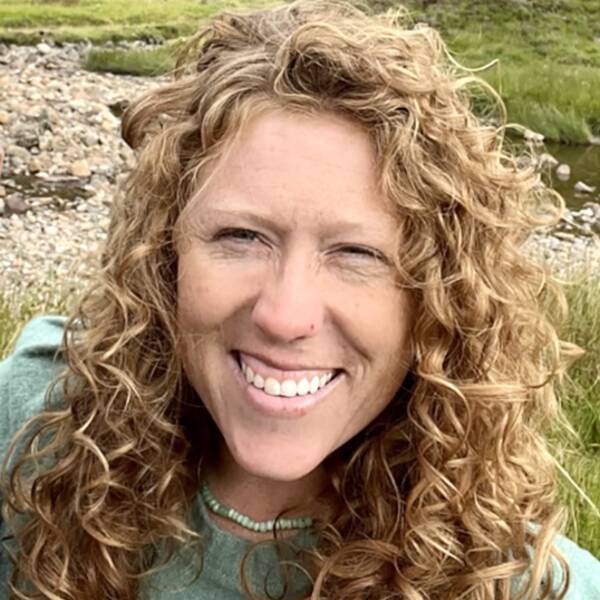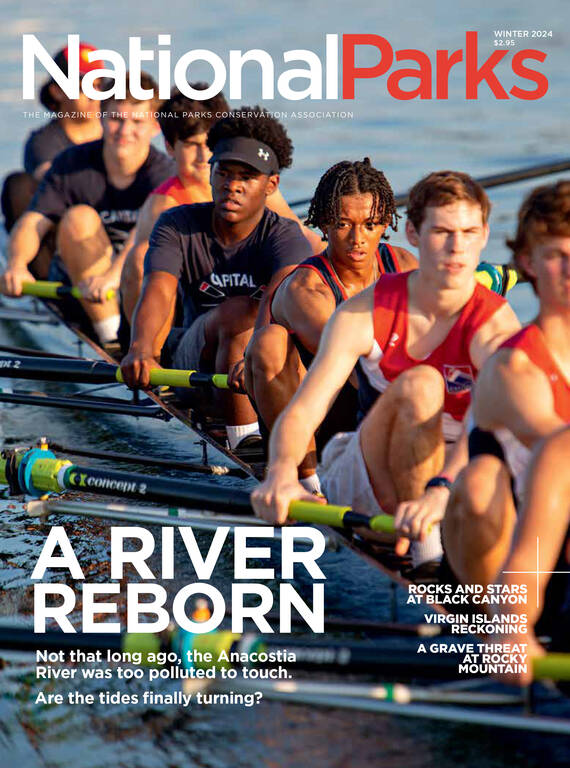Winter 2024
Old Timey All the Timey
My life with a national historical park fanatic.
The whiplash should have been the first indication that I was dating someone different. Driving down a sun-dappled state road in South Carolina in 2006, my boyfriend, Daniel, said, “Oh hey, I wanna show you something,” and suddenly veered left onto a side road toward the site of an 18th-century plantation.
“Mmkay,” I said, shaking off a neck ache. What were we doing here?

Charles Pinckney National Historic Site
Charles Pinckney’s home near Charleston is preserved today to tell the story of this “forgotten founder’s” life and role in the creation of the United States Constitution. Pinckney was an…
See more ›“Ever heard of Charles Pinckney?” Daniel said. I couldn’t say that I had. Daniel didn’t keep me in suspense for long, however. With the same energy as that of Swifties making their way backstage at the Eras Tour, he practically squealed, “He was a signer of the Constitution, and he lived here!”
At a complete loss, I blinked into the August sun. “Wow. No kidding?”
“Yes!” said Daniel. “Let’s go tour the exhibit!”
How could I say no?
Inside, Daniel pocketed the brochures and asked for a lay of the land to see all the highlights of Charles Pinckney National Historic Site. As sweat dripped down my back, I learned about the controversial founding father. Pinckney fought for religious freedom at the same time that he defended the vile institution of slavery. It was a weird date destination, for sure, but I had to admit, it was interesting, which was more than I could say of the last date I’d had before I’d met Daniel.
Back in the car, his buckle made a satisfying click. “Well, what did you think?”
I thought I was being punked, but it wasn’t an act. I soon learned that my history major boyfriend wasn’t just into the past — he was a time traveler. We’re talking about a man who, when told by a grocery cashier, “That comes to $18.44,” would respond, “Ah yes, the year James K. Polk defeated Henry Clay for president.” Here was a guy who never passed a historical marker on the freeway without stopping to read it (front and back, mind you), could name all the presidents in order, and kept a tiny copy of the Constitution in his wallet.
Now, I’m not entirely ignorant of history. My folks took my little sister and me to museums and historic sites near our Pacific Northwest home and on trips to the East Coast, but that was nothing compared to Daniel’s childhood in Virginia. In the Commonwealth, you can’t walk out your front door without tripping over a battlefield or colonial landmark. Many of these sites are managed by the National Park Service, and visiting places such as Yorktown, Jamestown and Appomattox Court House propelled Daniel to eventually become a high school history teacher.
So naturally, this love of historic parks served as the backdrop of our courtship. We were living in Charleston at the time. Daniel would suggest a beach walk, and somehow, it would always end at Fort Moultrie, just off the shore, looking at cannons. On other days, he’d lure me with the promise of a ferry ride around Charleston Harbor. I’d gladly agree, only to be shuttled to Fort Sumter, the site of the first shots of the Civil War.
He saw it as an opportunity for a national historic park-a-thon, or as I’ve come to remember it, a joy ride through American history horrors.
After Daniel proposed — I said yes — we moved from the Lowcountry to Burlington, Vermont, so he could attend grad school. What I figured would be a weeklong romantic getaway to get there was not what Daniel had in mind. He saw it as an opportunity for a national historic park-a-thon, or as I’ve come to remember it, a joyride through American history horrors.
First up: Petersburg National Battlefield, site of the longest siege of the Civil War and home to the “Crater,” a vast hole where some 352 Confederates were blown up and scores of Black Union troops were killed and injured in the battle that followed. Nothing says romance like pondering 19th-century amputation. Next, we exited the interstate in Maryland to consider the bloodiest day in American history at Antietam. Here, 12 hours of fighting resulted in the death or wounding of around 23,000 men. And then, to cap off the holiday fun, we stopped at Morristown National Historical Park in New Jersey, where Gen. George Washington’s Continental Army survived the coldest winter on record.

Small Wonders: The Country’s Teeniest National Park Sites
Some national parks are celebrated for their vast landscapes, but these 10 sites share enormous stories and achievements in suprisingly small spaces.
See more ›Now, after 14 years of marriage and more visits to national historic sites than I can count, I can confess that, yes, I’ve complained once or twice on these outings (or odysseys, as they sometimes feel during hour three of wandering a battlefield). But I’ve also, dare I say, come to appreciate being married to a historical park fanatic. Many sites have opened my mind, and some have even opened my, big gulp here, heart. Take New York City’s Lower East Side Tenement Museum, a site affiliated with the Park Service. Before visiting, I thought I had a good understanding of the emotional and physical challenges immigrants faced. But it’s hard to fully wrap your head around the adversity so many desperate people overcame when moving to this country until you’ve stood in a 325-square-foot apartment that was home to a family of 10.
I had a similar epiphany at Ford’s Theatre, the site of Abraham Lincoln’s assassination. Walking into the small room across the street where he was laid after being shot by John Wilkes Booth, I was overwhelmed with grief. Here died the man who had worked to protect the Union, who had emancipated enslaved people, who had carried the burden of a floundering country despite the death of his son Willie while he was in office. For four years, Lincoln had embodied our nation’s hope for democracy, and in an instant, that hope appeared to be dashed. It was only after touring the museum that I fully appreciated the bewildering poignancy of this historic event.

National Parks
You can read this and other stories about history, nature, culture, art, conservation, travel, science and more in National Parks magazine. Your tax-deductible membership donation of $25 or more entitles…
See more ›All this is to say that what I didn’t realize on that first visit to the Charles Pinckney National Historic Site was that Daniel was doing more than force-feeding me historical facts. He was holding up a mirror to America and gently pushing me to view the reflection in all its awesome and sometimes awful reality. What I learned was that by wrestling with the past, really getting into the thick of it — at the actual sites where history was written — we can discover that what haunts us can become what guides us to do better moving forward. Once we are honest about past events, we can improve our future.
At least that’s what I tell myself and our now 8-year-old son, Wells, when we hear my husband utter his oh-so-familiar “Well, guys, there is this historical park site nearby we could check out.” I still roll my eyes, then I crack my neck and start loading the car.
About the author
-
 Kinsey Gidick Contributor
Kinsey Gidick ContributorKinsey Gidick is a freelance writer based in Virginia. Her work has been featured in publications including The New York Times, The Washington Post, Garden & Gun, Explore Parts Unknown and Roads & Kingdoms.



